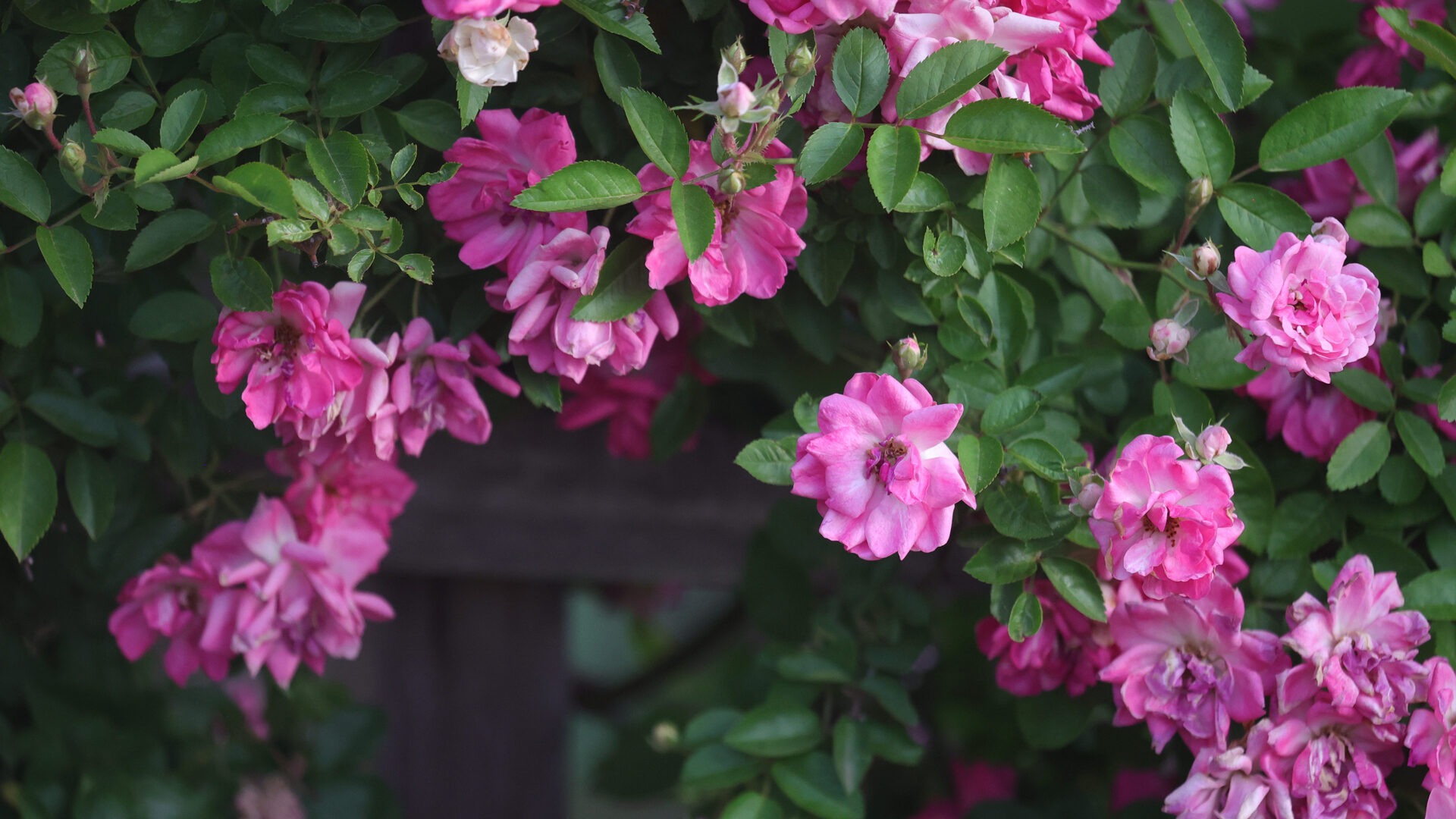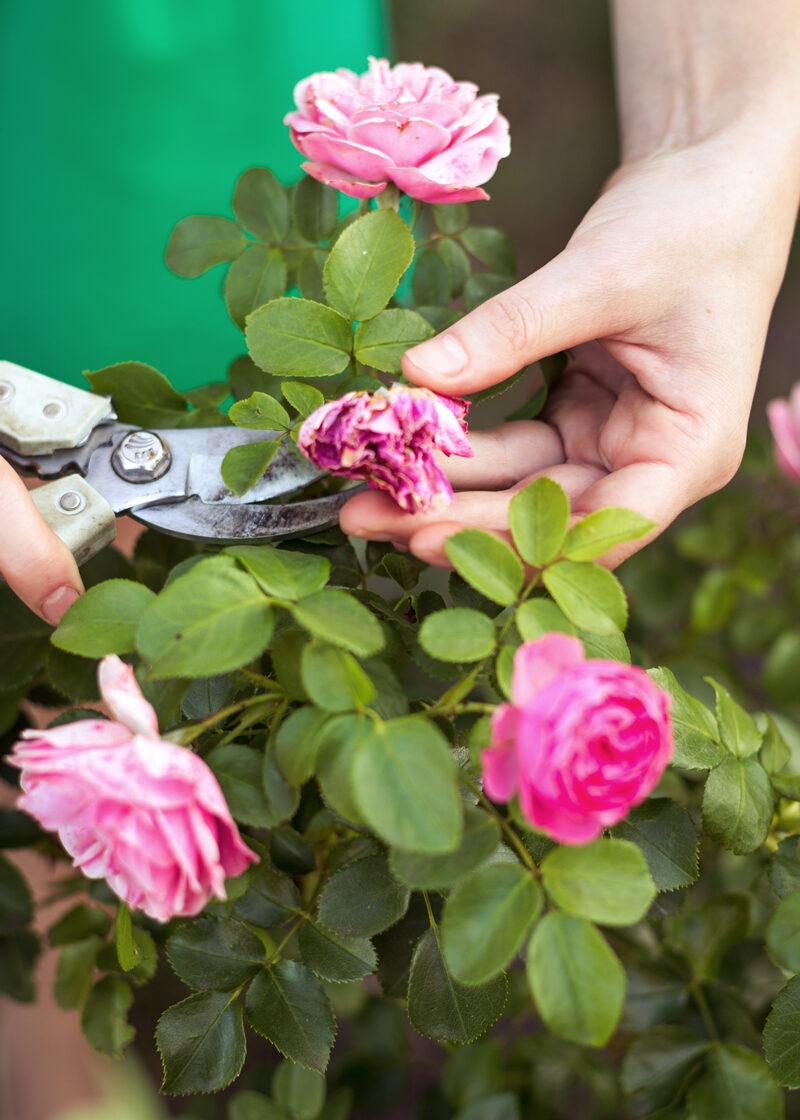Removing spent blooms encourages your rose bushes to keep on flowering.
Having roses in your yard is such a treat when they are full of beautiful, delicious smelling blooms. But the thorny truth is they do require some upkeep during the year.
While this term may sound a bit harsh, it perfectly sums up the best way to encourage new blooms: deadheading.
It’s the practice of removing old blooms that are past their prime or those that have lost all their petals. This helps keep your plants healthy and happy. Let’s explore why and how to deadhead roses in your San Antonio garden.
Why?
Scientifically speaking, deadheading roses is the practice of removing old flowers to divert the plant’s energy into making more flowers, rather than producing seeds or rose hips. Regular deadheading can lead to more continuous flowering, and it can also lead to healthier plants. Removing decaying flowers can help prevent the spread of diseases, including fungal infections.

When?
San Antonio’s sub-tropical climate means that roses can bloom from spring until fall. Of course, more pleasant weather in spring and fall means those are typically the seasons with the most blooms. But deadheading throughout the warm season can help your plant put on its best show at any time. (We typically stop deadheading in late fall to allow the bushes to go dormant in winter.)
Avoid making any big cuts during the long, hot summer months, to avoid stressing the plant.
How?
 First step is to always gather your tools. You’ll want a good pair of pruning shears and gloves, and something to put any cuttings into.
First step is to always gather your tools. You’ll want a good pair of pruning shears and gloves, and something to put any cuttings into.
- Find flowers that are wilting, browning or have lost all their petals. Of course, leave new buds and flowers that are still vibrant alone. Note: If one flower needs to be removed from a bundle of blooms, simply pinch or cut off the finished flower at the base, leaving the rest of the flowers to continue to bloom.
- Use clean, sharp pruning shears to cut off the spent flower back to the first set of five-leaflet leaves, ideally just above an outward facing bud. Always make your cut at a 45-degree angle away from the bud or leaflet.
- Clean up cuttings to keep disease and pests away.
- After deadheading, consider applying rose food/fertilizer and giving the plant a good watering to support new growth. Remember to always water at the base of the plant and avoid showering the blooms and leaves.
Remember, deadheading is different than pruning. With deadheading, you are simply removing the finished bloom while pruning tends to be a more severe cut. Leave the foliage of the rose plant alone when deadheading unless you notice disease, in which case remove any leaves that look sick. As with other plants, if leaves are discolored, it can be a sign of nutrient deficiency. Search online for the type of rose bush and a description of the leaves to learn more about what might be going on.
The best strategy for keeping your roses looking great year-round is to deadhead routinely. The practice itself is quite simple, but left undone the work can build up, leaving you with a lot of spent blooms to trim and a lack of roses to enjoy.
The quicker you deadhead, the faster the plant will reflower. And as you deadhead, let’s think about a less depressing term for this practice.
Until then, happy deadheading.


